Frost Protection - UTL Repository
Frost Protection - UTL Repository
Frost Protection - UTL Repository
Create successful ePaper yourself
Turn your PDF publications into a flip-book with our unique Google optimized e-Paper software.
RECOMMENDED METHODS OF FROST PROTECTION<br />
Fuel recommendations for lighting heaters varies from ratios of 1 : 1 oil to<br />
gasoline [petrol] to 8 : 5 oil to gasoline [petrol]. Buckets or tanks towed by a<br />
tractor, which allow two lines of burners to be filled simultaneously, are used to<br />
refill the heaters after a frost. When direct heating is used, to minimize fuel<br />
consumption the protection is started just before reaching critical damage<br />
temperatures. The temperature should be measured in a Stevenson screen, fruitfrost<br />
shelter or Gill shield that prevents thermometer exposure to the clear sky.<br />
Labour requirements to refill liquid-fuel heaters are high, so centralized<br />
distribution systems using natural gas, liquid propane or pressurised fuel oil have<br />
become more popular. In more elaborate systems, ignition, the combustion rate and<br />
closure are also automated, in addition to fuel distribution. The capital cost to install<br />
centralized systems is high, but the operational costs are low. Propane-fuel heaters<br />
require less cleaning and the burning rates are easier to control than oil-fired heaters.<br />
Because the burning rate is less, more heaters are needed (e.g. typically about 100<br />
per hectare of stack heaters and about 153 per hectare of propane-fuel heaters), but<br />
the protection is better because more heaters at a lower burning rate are more<br />
efficient. Under severe conditions, the propane supply tank can sometimes freeze<br />
up, so a vaporizer should be installed to prevent the gas line from freezing.<br />
The ratio of radiation to total energy released is 40 percent for burning solid<br />
fuels in comparison with 25 percent for burning liquid fuels, so solid fuels are<br />
more efficient at heating the plants, especially under windy conditions. The main<br />
disadvantage of solid fuels is that energy release diminishes as the fuel is used up,<br />
so the energy release becomes limiting when it is needed most. Another<br />
drawback is that solid fuels are difficult to ignite, so they must be started early.<br />
They are also difficult to extinguish, so fuel is often wasted.<br />
Wind machines<br />
Wind machines alone generally use only 5 percent to 10 percent of the fuel<br />
consumed by a fuel-oil heater protection system. However, the initial investment<br />
is high (e.g. about $ 20 000 per machine). Wind machines generally have lower<br />
labour requirements and operational costs than other methods; especially electric<br />
wind machines.<br />
Most wind machines (or fans) blow air almost horizontally to mix warmer air<br />
aloft in a temperature inversion with cooler air near the surface. They also break<br />
up microscale boundary layers over plant surfaces, which improves sensible heat<br />
transfer from the air to the plants. However, before investing in wind machines,<br />
be sure to investigate if inversions between 2.0 and 10 m height are at least 1.5 °C<br />
or greater on most frost nights.<br />
27


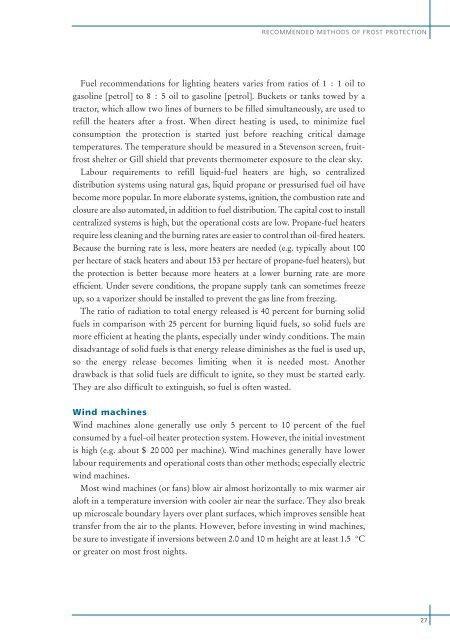
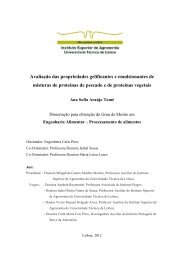
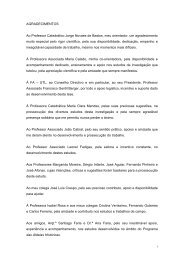
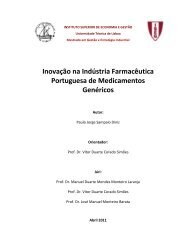
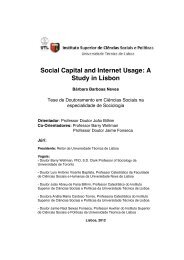
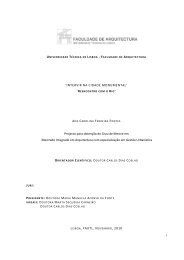
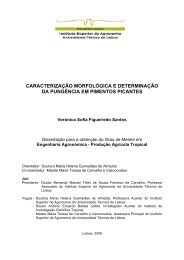

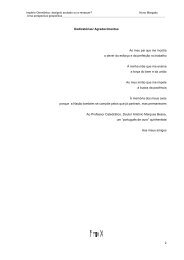
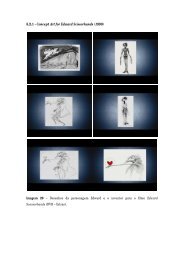
![Tese - Es..[1].pdf - UTL Repository - Universidade Técnica de Lisboa](https://img.yumpu.com/25707135/1/184x260/tese-es1pdf-utl-repository-universidade-taccnica-de-lisboa.jpg?quality=85)


